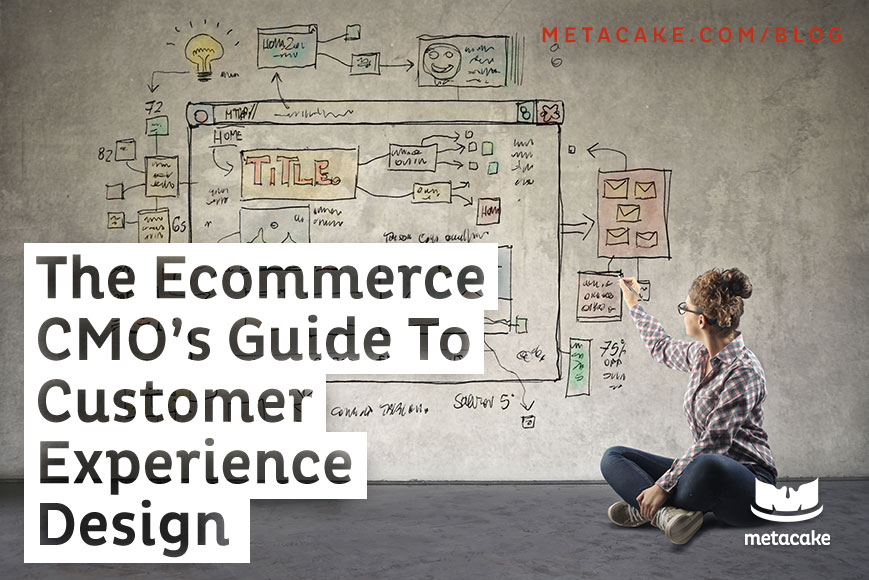
The Ecommerce CMO’s Guide to Customer Experience Design
More than ever, UX (user experience) or CX (customer experience) is getting a lot of buzz. As long time champions of the importance of customer experience design, all we can say is FINALLY!
CMO’s and marketing managers are at least now aware of the concept of CX and have had a least a few people tell them they should care about it.
But still, many are reluctant to invest in CX.
Why?
There are two main reasons that CX doesn’t get the attention that it deserves.
1. Lack of Knowledge
Many marketers don’t understand the benefits of CX or even on a basic level what exactly CX means. Don’t worry…we’ll get to that. Read on!
2. Vague ROI
If marketers do understand CX and its benefits, many don’t invest in it because putting a clear number on ROI is hard, so it may be hard to defend to those higher ups.
Well, first let’s just say, if you are a CMO or marketing manager and you are not yet investing in CX, you are not alone.
But it’s certainly time to come on over to the other camp.
What is Customer Experience Design?
Let’s start with this: CX is not the same as design (visual design, that is). CX design and visual design are completely separate steps.
CX is, on the other hand, the same as UX essentially. Calling it customer experience, instead of user experience, just helps it be more relatable. When we say “customer experience design,” most people can grasp that we are…well, designing the customer experience. When we say “user experience design” or simply “UX design,” it sounds technical, cold and distant. I’m not sure, as an ecommerce marketing manager, what the UX should be. But I probably have a pretty good idea what customer experience I want to create.
In a physical retail store, designers would think through what the flow of the store is, where customers go to get information, how and where they complete the purchase process. For an ecommerce store, the process of designing the customer experience is exactly the same. You need to ask all of these same questions in order to design an intuitive and pleasing customer experience.
Simply put, customer experience design is putting yourself in the shoes of the customer and designing a web experience that makes sense for them from start to finish.
How to Get Started with Customer Experience Design
Start simple.
Try to start thinking like your customers do and even better, listen to what they have to say!
You don’t have to start out with focus groups or usability testing. You don’t even have to interact directly with your customers to get the info that you need. Just start by watching your current customers as they peruse your site.
There are some great tools out there to do this.
Use These Customer Experience Tools
Google Analytics
Likely you already have google analytics installed. But is it giving you good, meaningful, and accurate data? And do you now how to read it? With a proper GA install, you can see a user’s path and determine their greatest friction points.
Need help reading your data? Get in touch with us!
Hotjar
Hotjar is a great little tool that allows you to record customers mouse movements and clicks as they peruse your site, as well as view heat maps.
GetSiteControl
This tool allows you to set up pop up alerts and surveys to your customers to gather feedback. And did we mention that it’s incredibly easy to use?
Intercom
Intercom is another tool that allows you to directly interact with your customers and ask for feedback. You can even set up scripted chats to ask specific questions after a visitor takes a certain action.
Optimizely
Optimizely is our preferred conversion rate optimization and split testing platform. It allows you to easily compare the effectiveness of different site experiences based on customer goal success.
Measure the Impact
As we mentioned up front, difficulty in measuring the ROI on CX design is one of the major barriers. With these tools, and specifically optimizely, you can measure in terms of dollars and cents how your site is improving as you listen to your customers and make changes based on their feedback.
And one more piece of good news about CX (in case you needed one)…
It’s free! At least to start. Customer experience design is a mindset, so you can get started on CX today without a huge investment. In the long run, you will want a CX professional to lead your experience design, but that doesn’t mean you can’t get started now on your own!


